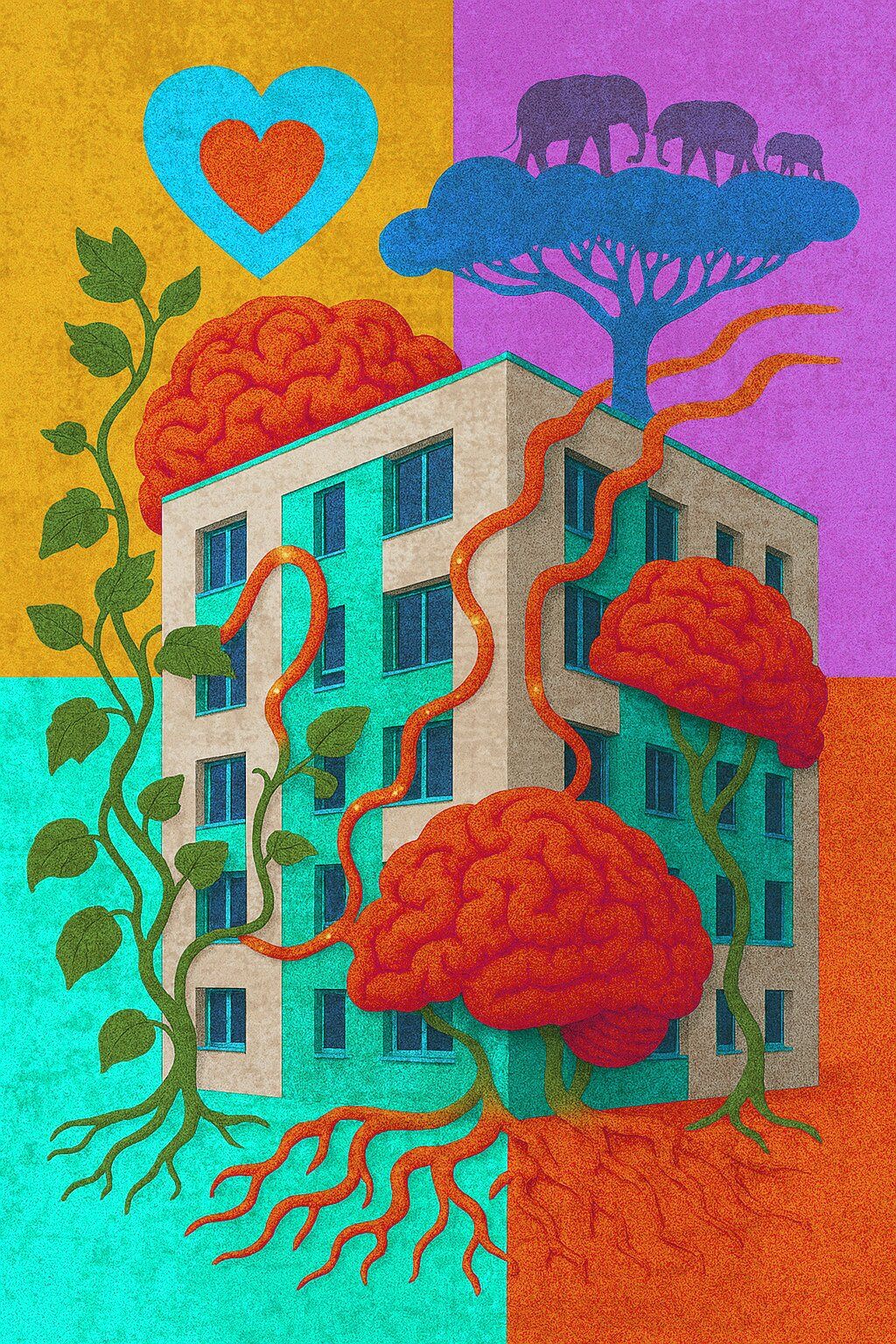The Architecture of Care: Rethinking Built Environments for Mental Health and Belonging
Good design holds people—not just their tasks.
Spaces carry memory. People walk into a room and immediately sense whether they are safe, welcome, invisible, or surveilled. These responses aren’t abstract. They’re embodied. The built environment directly affects how we regulate emotion, navigate uncertainty, and form relationships.
Hospitals, schools, refugee centers, government offices—these are places where people seek help, structure, or resolution. But too often, their design reflects institutional efficiency rather than human need.
Fluorescent lights, cold materials, echoing corridors. Uniformity over adaptability. Surveillance over trust. These details build up into a message: stay in line, keep moving, don’t get too comfortable.
Design as Nervous System Regulation
People don’t just use space. They feel it.
Noise triggers. Corners intimidate. Harsh lights agitate. When you are grieving, overwhelmed, or afraid, space becomes a second skin. It either supports or stifles your ability to breathe, think, and connect.
Design for care begins with nervous system awareness. That means spatial layouts that allow choice. Lighting that reduces sensory stress. Materials that absorb rather than reflect noise. Visual cues that help with orientation. These elements directly affect whether a person stays grounded or spirals into shutdown.
In trauma-aware environments, regulation is the baseline. Every decision—where to sit, how to move, what to expect—is predictable enough to create stability, but flexible enough to allow autonomy.
Design Across Cultures and Power
Care is contextual. What feels safe in one culture can feel alienating in another. Spatial dignity must account for cultural rituals, visual languages, and lived histories. In settings like clinics for displaced populations or conflict zones, this sensitivity becomes survival.
But design also reflects power. Who decides the layout? Whose comfort takes priority? Often, it’s not the people using the space every day.
That’s why participatory planning matters. Community members know which entrances feel safer, which materials feel familiar, which visual cues signal respect. Co-design isn’t a gesture—it’s a shift in authority.
From Blueprint to Behavior
Designing for care doesn’t stop at materials or floorplans. It extends to how people behave in space. If the architecture welcomes, but the staff demean—trust collapses.
Physical environments and service systems must align. That means training staff in trauma-informed interaction. It means organizing workflows that don’t force people to repeat painful stories. It means clear signage, coherent policies, and thoughtful transitions between digital and physical touchpoints.
At ADSI, we treat built environments as ecosystems. Architecture, behavior, systems, and symbolism all work together. When that system aligns with care, the space becomes coherent.
What Comes Next
Design for care is not a specialty. It’s a requirement. As mental health, neurodiversity, and community trauma become visible across sectors, the built environment must respond—quietly, precisely, and without aesthetic theatrics.
We are moving toward design that restores dignity, regulates distress, and communicates presence.
We are building spaces that understand.



Leave a Reply